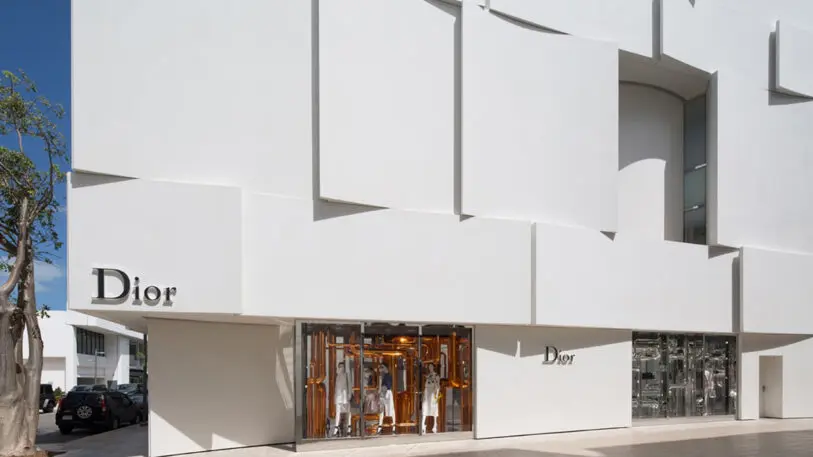After business hours, many people like to stroll along shopping streets, peering through the windows of luxury brands to take a peek at the latest handbags and coats displayed inside. But on your next visit to the Miami Design District, you’ll find the lights off at Dior, Fendi, Tiffany, Bulgari, and the other brands owned by the French luxury conglomerate Louis Vuitton Moët Hennessy (LVMH).
At Miami Design Week today, LVMH announces an effort to fight climate change by reducing the impact of its fleet of 22 storefronts in the Miami Design District. It has partnered with the Miami Design District on a comprehensive plan that reimagines every aspect of constructing and running a brick-and-mortar space, from using rainwater to shutting off lights after hours to using green electricity. And it’s designed to be a blueprint to help LVMH rethink the operations of its entire fleet of 5,600 stores across the globe.
Anish Melwani, chairman and CEO of LVMH in North America, points out that LVMH rents most of its retail locations around the world from landlords such as the developer of the Miami Design District. As a result, the company doesn’t have complete autonomy over issues like what kind of electricity is used. But as a major player in the luxury space, Melwani sees an opportunity to exert influence over its landlords and the retail sector more broadly.

“These sustainability initiatives are one of the few things we do at the LVMH level,” Melwani says. “Our brands are very distinctive; they’re the ones focused on craftsmanship and creating desirability. But it would be very silly for them to do research about the best practices at retail locations one by one. By doing it at the group level, we can partner with the landlords and have a greater impact.”
Melwani says that the first step is rethinking exactly how the buildings are constructed. Luxury brands are known for their lavish interiors, with marble and furniture sourced from all over the world. But at the Miami Design District, LVMH has asked brands to source materials locally for its interiors to reduce the emissions required to transport them. This means that creative directors at the brands will have to rethink what the stores will look like.
“There’s no question that seeking to have the vast majority of materials come locally will influence the design (of the stores),” Melwani says. “Would there be some creative directors who will be annoyed by this? Sure. But let’s be clear: Creative directors get annoyed by lots of stuff; it’s kind of their thing. On the other hand, they also come up with some of their most brilliant ideas when they are working against constraints.”
In terms of the construction process, the intention is for LVMH to reuse or recycle 75% of demolition debris, use 50% sustainably sourced wood in the foundations of the building, and source 20% of all new building materials, including concrete, locally.
Now that the stores are built, LVMH is committed to reducing their environmental footprint as much as possible. In the Miami Design District, LVMH is pushing to ensure that all electricity comes from green sources by 2025. In turn, the Design District went to the local energy provider, Florida Power and Light, to ensure that LVMH brands would have access to solar power. “Today, sustainable renewable power costs more than coal and gas,” Melwani says. “It takes people committing to pay for it for the cost to come down. And by doing so, we’re showing the industry that it’s not so complicated to transition to renewables.”
The two parties also worked together to conserve rainwater in these new buildings, so it could be utilized for gardens, toilets, and maintenance. Shade will be incorporated to cover more than 40% of the sidewalks and streets to keep the Design District cooler. And they will shut off lights inside the stores at night, although the front window displays will still be illuminated.
This isn’t the first time LVMH has partnered with a developer to reimagine the operations of its stores. In China, it collaborated with Hang Lung Properties–which is the landlord for nearly 100 LVMH stores across 10 malls–on many similar initiatives, including using clean energy and saving rainwater. That effort formed a blueprint for the work in Miami, and will inspire further collabs with landlords around the world.
“When you work with some of the bigger [developers], it can get more complicated because they work with larger jurisdictions,” Melwani says. “But we certainly hope to use our work here as a forcing mechanism, to say to the industry, ‘This is important to us. We’re willing to do our share of the work.’”
Recognize your brand’s excellence by applying to this year’s Brands That Matter Awards before the early-rate deadline, May 3.
